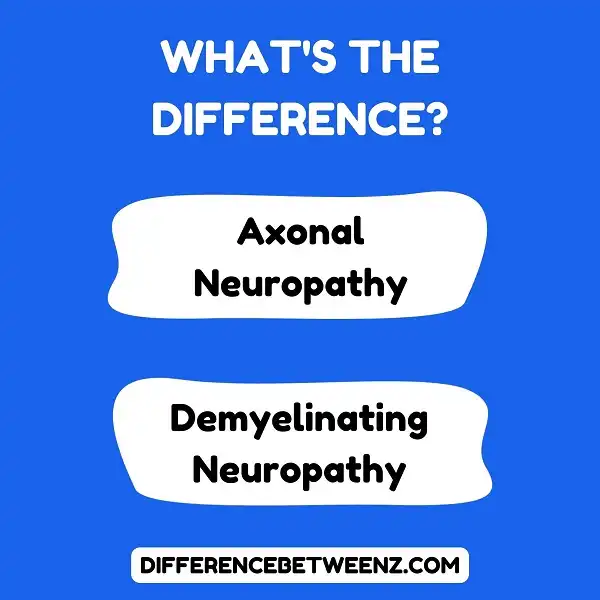There are two main types of neuropathy: axonal and demyelinating. While both can cause nerve damage, they do so in different ways. Axonal neuropathy is the most common type of neuropathy and is caused by damage to the axons, which are the long extensions of nerve cells that transmit messages to and from the brain. Demyelinating neuropathy, meanwhile, is caused by damage to the myelin sheath, a protective layer that surrounds the axons. This type of neuropathy is much less common than axonal neuropathy. In this blog post, we’ll take a closer look at these two types of neuropathy and discuss how they differ from each other.
What is Axonal Neuropathy?
Axonal neuropathy is a type of nerve damage that results in the deterioration of the Axons. Axons are the long, thin fibers that carry electrical impulses from the neuron cell body to the Axon terminals. When Axons are damaged, they are unable to send impulses to the Axon terminals, which can cause a wide range of symptoms. Axonal neuropathy can be caused by a variety of factors, including physical trauma, infection, and exposure to toxins. Treatment for Axonal neuropathy typically focuses on relieving symptoms and may include physical therapy, occupational therapy, and medication. In severe cases, Axonal neuropathy can result in paralysis or death.
What is Demyelinating Neuropathy?
Demyelinating Neuropathy is a type of nerve damage that occurs when the myelin sheath, a protective covering that surrounds nerve cells, is damaged. This damage can interfere with the ability of the nerves to send signals and can lead to a wide range of symptoms, including numbness, weakness, and pain. Demyelinating Neuropathies can be caused by a variety of conditions, including autoimmune diseases, infections, and exposure to certain toxins. Treatment for Demyelinating Neuropathies typically focuses on relieving symptoms and preventing further damage to the nervous system. In some cases, treatment may also involve rebuilding the myelin sheath.
Difference between Axonal Neuropathy and Demyelinating Neuropathy
Axonal neuropathy and demyelinating neuropathy are two types of nerve damage.
- Axonal neuropathy occurs when the axons, or long extensions of nerve cells, are damaged.
- This type of damage can cause problems with movement, sensation, and muscle control.
- Demyelinating neuropathy, on the other hand, occurs when the myelin sheath, a layer of insulation that surrounds nerve cells, is damaged.
- This type of damage can cause problems with communication between the nervous system and the muscles.
Both types of neuropathy can lead to pain, numbness, and weakness. Treatment for both conditions typically includes physical therapy, medications, and lifestyle changes.
Conclusion
Axonal neuropathy and demyelinating neuropathy are two different types of peripheral nerve damage. They have different causes, symptoms, and treatments. It is important to know the difference between these two conditions so that you can get the right diagnosis and treatment. If you think you may have one of these conditions, talk to your doctor.


